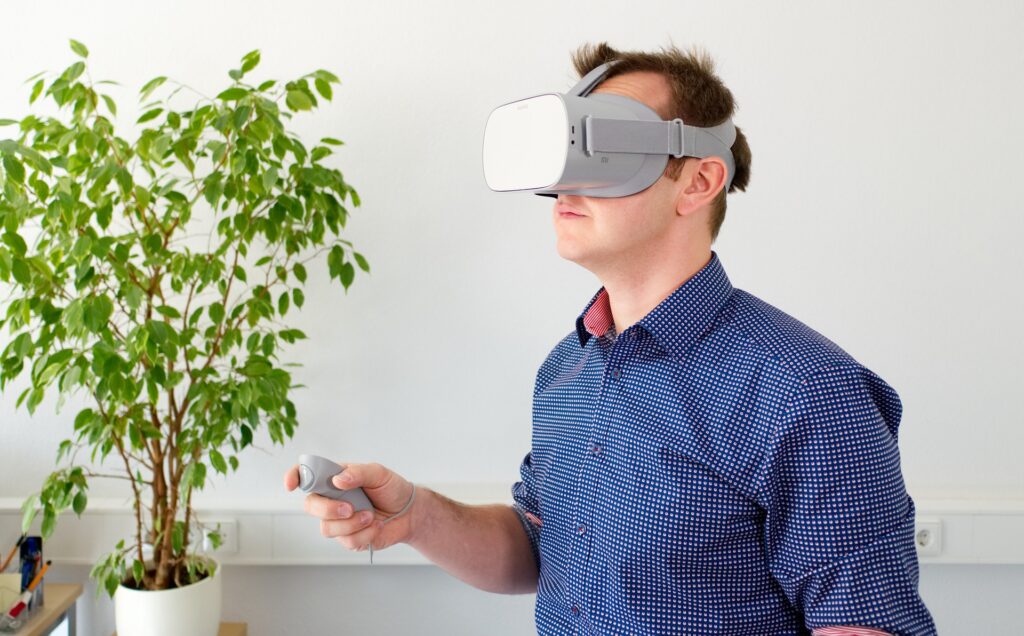
Human communications took a huge turn during the COVID-19 pandemic; a bizarre shift. Healthy communication during the pandemic is one that involved the least contact between the communicating parties. With social life crippled to its lowest level ever, virtual communications technologies were adopted where possible to sustain communication and industrial productivity. Social media and video conferencing tools were the biggest winners from the pandemic. Yet, they were unable to mimic normal human interactions. Mainly due to their inability to convey emotion and ‘touch’.
Virtual reality solutions rose in prominence and offered high throughput walk-throughs where these other alternatives failed. Thanks to the pandemic, VR has evolved from a fun tool for gaming and recreational activities to an advanced human communication tool. With its potentials and applications growing since then; Mark Zuckerberg’s Facebook rebranded to Meta to reflect its plans to make a deep dive into researching and building human communication solutions using Virtual reality technologies. Big tech companies are jumping on the trend with talks of building a complete virtual world making major headlines throughout the last quarter of 2021.

Metaverse — the general name for the virtual world built using VR technologies is a major discussion amongst prominent role players in the technology sector. The Metaverse will feature personalized avatars built using VR and Non-fungible token (NFT) technologies. Coined by Neal Stephenson in his 1992 novel, “Snow Crash,” and popularized by cryptocurrency and blockchain projects; the metaverse is an attempt to (re)create a world outside our world that exists in our world. That must have been tough to read. Well, it’s probably the most straightforward description of what the metaverse really is.
Using a combination of virtual reality and decentralized digital art technologies, tech companies and startups are working to create a world where we exist in simulation and perform certain interactive activities. The only difference is, that we are not doing this in ‘real’. Remember those games where you’ll have to select an avatar that represents you? this is something similar but once again it’s not just a game.
Different sectors are currently exploring ways of utilizing Virtual reality technology. From a whole pain management technology in health facilities built using VR technology to virtual 3D house models with close to real-life effects used by construction companies. The ‘pandemic communication tool’ is fast taking its place in our everyday life.
Normal physical human communication still remains undefeated but VR solutions are presenting interesting ways to enhance communication and bridge the conditional gaps in human communication through a readily available means of making sensational communications.
Virtual Reality technology is great, but here’s the deal-breaker; it doesn’t come cheap…at all. An efficient VR headset costs anywhere between $50 to $1000. Setting up a complete VR facility cost an excess of $2,000 to multiple time this figure. In addition to the costly and relatively scarce facilities, Virtual reality management personnel aren’t so rampant and might cost significantly to hire.

Like the early days of computers and smartphones, the cost of setting up and managing an efficient VR facility is one of the major factors limiting its adoption. Currently, only high-budget companies and institutions are able to properly integrate VR technologies into their routine procedures. Average companies can only manage to set up improvisational VR or low quality setups that hardly satisfy their purpose.
Post-pandemic workplaces and industries have come to terms with virtualized communication alternatives. Many workplaces still have ‘work from home’ options for staff. Trimming down the workplace capacity has some advantages — saved cost and enhanced productivity due to comfortable settings.
Different sectors could benefit greatly from VR technologies if made easily affordable.
Construction industries’ Virtual 3D housing model when fully harnessed will create cheaper house planning and offer house owners a true feel of their houses before proper completion. This will enable them to make changes to their proposed structure without tangible extra costs.
Virtual learning which became more popular during the pandemic has developed post-pandemic. Educational institutions are exploring ways to leverage VR technologies to improve the learning process and engage even more students. Distant learning programs powered by virtual reality technology brings teacher closer to the students in much better ways than video conferences and chat rooms.
Creative VR technologies are exploring ways to keep students engaged through fun learning processes powered by Virtual reality. This process is expected to culminate in better academic performance and the production of more qualified graduates.
Corporate organizations have even more realistic applications of VR technologies; virtual meet-ups, virtual work offices, and virtual marketing outreaches. Financial institutions can cut a great percentage of the cost of developing and maintaining the workplace facility by using virtual alternatives where possible. Fortunately, many workplace procedures can be replaced by virtual alternatives. This will not only save costs but offer a faster way of doing things. Conveyance for meet-ups and marketing presentations would take just a few minutes if every concerned party can afford VR facilities. Turning up for emergency meetings is as easy as wearing a VR headset.
While these brilliant uses of VR technology will inevitably boost the productivity of these industries and associated sectors, the cost of setting up VR facilities eats deep into the projected saved costs; this defeats the goal.
Government subsidies, optimized production costs; a few work-throughs could help lower the cost of VR facilities. The latter is more feasible as government subsidies are limited and could have an even worse effect on the general economy. Tech companies should consider trimming the production cost to produce more affordable facilities. This can also be done by producing cheaper alternatives with basic yet efficient features. A widespread VR adoption will be a catalyst for the next phase of the workplace and general communication revolution.
Leave a Reply